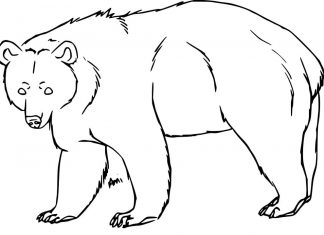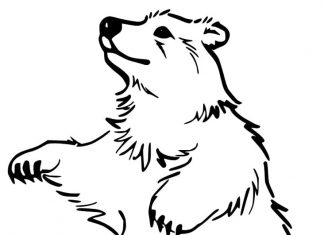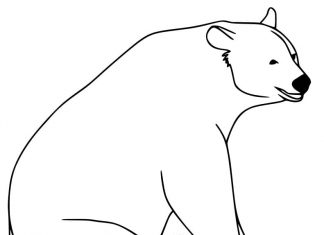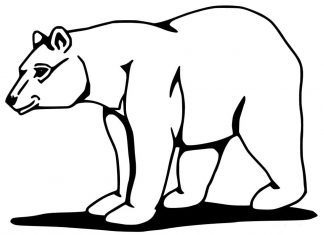The black bear (Ursus americanus) is a species of large mammal in the bear family.
Black Bear Coloring Book
information
- Occurrence and Habitats: The black bear is widely distributed in North America, occurring mainly in forests, tundra, swamps and mountains. Their range extends from northern Mexico to Alaska and Canada.
- Appearance: Despite its name, the black bear's coat can range from dark brown to light brown. The body length of an adult is usually between 1.2 and 2.5 meters, and the weight can oscillate between 60 and 270 kilograms.
- Diet: The black bear is an omnivore, which means its diet is diverse. They eat fruits, berries, grasses, roots, insects, fish and small mammals. Their ability to adapt to different types of food helps them survive in diverse habitats.
- Behavior: Black bears are usually solitary, although they can sometimes be found near food or water sources. During the winter, they go into hibernation, during which their activity is greatly reduced.
- Interactions with People: Confrontations between black bears and humans are relatively rare. Nevertheless, bears are attracted to human settlements in search of food, which can lead to conflicts. Proper food storage methods and avoiding feeding wild bears are important to avoid such situations.
- Protection and Threats: The black bear is protected in many regions, but its population is still threatened by habitat loss, conflicts with humans and poaching. Conservation and education programs are key to preserving the species.
- Culture and Symbolism: The black bear is often present in the mythology and culture of North America's indigenous peoples, where it has spiritual and symbolic significance. In many cultures it is considered a symbol of strength, wisdom or harmony with nature.
trivia
- Size and Appearance: The black bear (Ursus americanus) is one of the most common bears in the world. Despite their name, their coat can be various shades of brown, and not necessarily black. Adults can reach a body length of 1.2 to 2.5 meters and a weight of 60 to 270 kilograms.
- Nutrition: Black bears are omnivores, which means their diet is very diverse. They eat fruits, berries, plants, insects, fish and small mammals. They are also capable of hunting larger animals such as deer and elk.
- Geographic Scope: The black bear is widely distributed in North America. It can be found in a wide variety of habitats such as forests, swamps, mountains and tundra.
- Characteristic Skills: Black bears are known for their well-developed sense of smell and good climbing skills. They can climb trees in search of food or shelter.
- Hibernation: The black bear is a hibernating animal, which means that it goes into a dormant state in winter. During this time, its body's metabolic rate decreases, and the bear is not active.
- Interactions with People: Black bears are often seen near human settlements, which can lead to conflicts. They forage for food in areas where residents leave garbage or eat outside. In such cases, it is important to avoid feeding and habituating bears to human presence.
- Protection and Threats: The black bear is protected in some regions and is considered a species of least concern by the International Union for Conservation of Nature (IUCN). However, confrontations with humans, habitat loss and poaching continue to threaten their populations.
- Legends and Culture: The black bear is often present in the folk culture and legends of various Native American tribes. It also has a symbolic meaning in many cultures, referring to courage, strength or spirituality.
- Name in Indigenous Language: In the languages of the indigenous peoples of North America, the black bear is called by various names. For example, in the Ojibwa language it is called "mukwa."
- Tourism and Observation in Nature: In some places, such as national parks, organized tours can be undertaken to observe black bears in their natural habitat. However, it is important to do this with respect and caution so as not to disturb their behavior.










